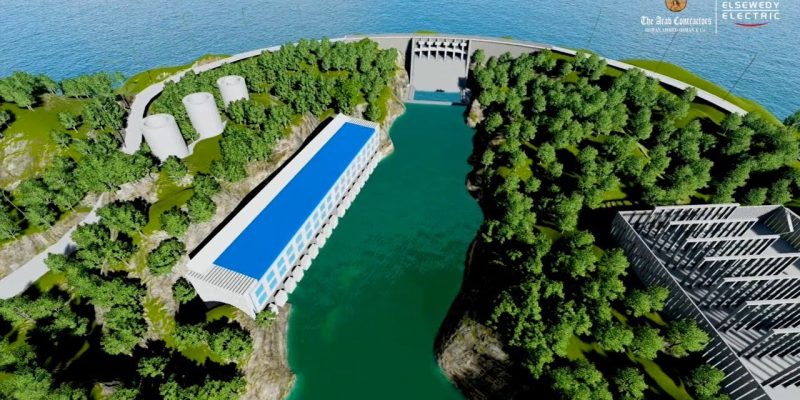Tanzanian authorities are launching the filling of the reservoir of the Julius Nyerere hydroelectric dam on the Rufiji River. The facility will power the turbines of a 2,115 MW hydroelectric plant, one of the largest in East Africa.
News on the Rufiji hydroelectric project in Tanzania. Authorities in the East African country are beginning to impound the dam, which is being built in the heart of the Selous Game Reserve in the Pwani region, about 220 km by road southwest of the economic capital Dar es Salaam. The impoundment is a crucial step before the Stiegler’s Gorge hydroelectric plant is commissioned.
Its basin will be able to hold 34 billion m3 of water thanks to a concrete dam in the shape of an arch, with a height of 134 m. Its reservoir will cover 1200 km2 in the middle of the Selous Reserve. The water flowing down from the dam will turn the turbines of a power plant with a capacity of 2,115 MW. The Tanzania Electricity Supply Company (TANESCO), which is implementing the project, estimates the annual capacity of the plant at 5,920 GWh.
Heavy environmental impact
After intense negotiations between Dodoma and Cairo, the Tanzanian government finally awarded the Stiegler’s Gorge hydropower project to Arab Contractors (ArabCo) and El Sewedy Electric. The two Egyptian flagships started work a few months after the contract was awarded in April 2019. Egypt and Tanzania are putting this $3 billion hydroelectric megaproject at the heart of their diplomatic relationship.
Read also- TANZANIA: US$ 140 Million from AfDB and AGTF for Malagarasi Hydropower Plant
In the end, the biggest losers in the Stiegler’s Gorge hydroelectric project seem to be the flora and fauna, as the dam is being built in the heart of the Selous Game Reserve. The animals will see their plains flooded by a final flood. They will have to find other territories, a migration that can be destabilizing for many species of animals such as felines, which are very anchored to their territory. In addition, the Rufiji River, on which the dam is built, remains a favorite area for many mammal species such as hippos. Even the most experienced will have difficulty getting out of a pool more than 100 m deep when it is filled when they have to come to the surface to breathe.
Diversifying the power mix
Faced with this situation, the World Heritage Committee reiterated its “serious concerns” and added the dam project to the reasons for the Selous Game Reserve’s inscription on the list of World Heritage in Danger, reasons that previously concerned only elephant poaching. For its part, the Tanzanian government indicates that the implementation of this project, which has been envisaged since the 1960s, should contribute to the country’s economic development and increase the share of renewable energy in the electricity mix to 54%, reinforcing Tanzania’s dependence on hydroelectricity.
However, this country of 61.5 million people is facing, like the rest of East Africa, an increase in droughts that reduce the level of dams and the production of hydropower. It is therefore urgent to diversify Tanzania’s electricity mix by introducing other sources, including solar, which is less important and accounts for less than 1% of the electricity mix of this East African country according to the United States International Trade Agency (ITA).
Jean Marie Takouleu






